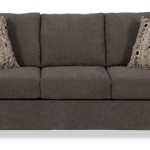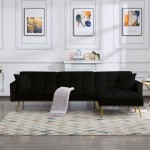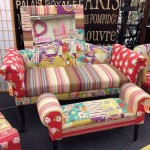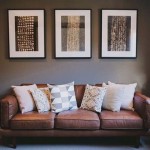Dark Grey Sofa Living Room Ideas: A Comprehensive Guide
The dark grey sofa has emerged as a highly desirable furniture piece in contemporary living room design. Its versatility allows seamless integration into various aesthetic styles, ranging from minimalist and modern to traditional and bohemian. The inherent neutrality of dark grey serves as an excellent foundation for building a sophisticated and visually appealing living space. This article provides a comprehensive exploration of design concepts, color palettes, material pairings, and decorative elements suitable for creating a stunning living room centered around a dark grey sofa.
Understanding the Appeal of Dark Grey
Before diving into specific design ideas, it's crucial to understand what makes dark grey such a popular choice for sofas. The color possesses several key benefits that contribute to its widespread appeal. First, dark grey offers a sophisticated and elegant aesthetic. It exudes a sense of timelessness and refinement, elevating the overall ambiance of the room. Unlike lighter neutrals, dark grey can create a sense of depth and drama, especially in well-lit spaces. Second, dark grey is exceptionally versatile. It harmonizes effortlessly with a wide spectrum of colors, textures, and materials, making it a flexible foundation for a diverse range of design styles. It can be paired with bright pops of color for a vibrant and energetic feel, or with muted tones for a more serene and understated look. Third, dark grey is practical. It's less prone to showing stains and everyday wear and tear compared to lighter-colored sofas, making it a suitable choice for households with children or pets. This durability contributes to its long-term value and ease of maintenance.
Exploring Complementary Color Palettes
The selection of a complementary color palette is paramount to achieving a cohesive and balanced living room design. With a dark grey sofa as the anchor, several color combinations can be explored to create different moods and visual effects. One effective approach is to incorporate contrasting colors to create visual interest and dynamism. Consider pairing the dark grey with vibrant hues such as mustard yellow, teal blue, or emerald green. These colors can be introduced through accent pillows, throws, artwork, and decorative accessories. This approach works particularly well in modern and eclectic living rooms. Another approach is to create a monochromatic color scheme for a sophisticated and calming ambiance. This involves using different shades of grey, ranging from light grey to charcoal, along with touches of white or off-white. This palette creates a sense of depth and texture while maintaining a refined and minimalist aesthetic. Layering different materials, such as textured throws and patterned cushions, is crucial to prevent the color scheme from feeling too flat or monotonous. Neutral palettes also provide a timeless appeal and can be easily updated with seasonal accents.
For those seeking a warmer and more inviting atmosphere, pairing the dark grey sofa with earthy tones such as beige, terracotta, or ochre is an excellent choice. These colors evoke a sense of comfort and tranquility, creating a welcoming and relaxing living space. Wood furniture and natural materials, such as jute rugs and linen curtains, further enhance the organic feel of the room. Consider using metallic accents, such as gold or brass, to add a touch of glamour and sophistication. Introducing plants into the living room not only adds a natural element but also complements the earthy tones, creating a balanced and harmonious environment. Ultimately, the choice of color palette should reflect personal preferences and the desired mood of the living room.
Material and Texture Combinations
The strategic use of different materials and textures is essential for adding depth and visual interest to a living room featuring a dark grey sofa. Contrasting textures can prevent the space from feeling flat and create a more dynamic and inviting atmosphere. Consider incorporating materials such as velvet, leather, and wool to create tactile interest. Velvet cushions or a velvet armchair paired with the dark grey sofa can add a luxurious and elegant touch. Leather accents, such as a leather ottoman or a leather coffee table, can introduce a masculine and sophisticated element. Wool throws or rugs can add warmth and coziness to the space. A juxtaposition of smooth and rough textures is also effective. For example, pairing a smooth velvet cushion with a textured linen throw can create a visually appealing contrast. The key is to experiment with different materials and textures to find the combinations that best complement the overall design aesthetic.
In addition to soft furnishings, the choice of flooring materials can significantly impact the overall look and feel of the living room. Hardwood floors provide a classic and timeless backdrop for a dark grey sofa. Light-colored hardwood floors can create a bright and airy feel, while darker hardwood floors can enhance the drama and sophistication of the space. Alternatively, incorporating a large area rug can define the seating area and add warmth and texture. A patterned rug can serve as a focal point, while a solid-colored rug can create a more understated look. The choice of rug material should also be considered. Wool rugs are durable and provide excellent insulation, while jute rugs offer a natural and textured look. When selecting materials, consider maintenance and durability. Opt for materials that are easy to clean and resistant to wear and tear, especially in high-traffic areas. The goal is to create a balanced and visually stimulating environment that is both comfortable and aesthetically pleasing.
Lighting and Decorative Elements
Lighting plays a crucial role in setting the mood of a living room and highlighting the features of a dark grey sofa. A well-lit living room feels more inviting and spacious, while a poorly lit room can feel cramped and gloomy. Layered lighting, which combines ambient, task, and accent lighting, is the most effective approach. Ambient lighting provides overall illumination, while task lighting focuses on specific areas, such as reading nooks or workstations. Accent lighting highlights artwork or architectural features. Consider using a combination of floor lamps, table lamps, and recessed lighting to create a balanced and versatile lighting scheme. Dimmable lights allow for adjusting the brightness to suit different activities and moods. Warmer light bulbs generally create a cozier and more inviting atmosphere, while cooler light bulbs provide a brighter and more energizing feel. Experiment with different types of lighting to find the combination that best suits the room's aesthetic and functional requirements.
Decorative elements are the finishing touches that personalize a living room and reflect individual style. Artwork, mirrors, and decorative accessories can add character and visual interest to the space. Large-scale artwork can serve as a focal point and add a sense of drama, while smaller pieces can be grouped together to create a curated gallery wall. Mirrors can reflect light and make the room feel larger and brighter. Decorative accessories, such as vases, sculptures, and candles, can add pops of color and texture. When selecting decorative elements, consider the scale and proportion of the room. Overcrowding the space with too many accessories can create a cluttered and overwhelming feel. Instead, focus on selecting a few key pieces that complement the overall design aesthetic. Introducing greenery into the living room can also add a natural and refreshing element. Potted plants, hanging plants, and floral arrangements can bring life and vibrancy to the space. The key is to create a balanced and harmonious environment that reflects the individual's personality and style.
Additionally, the placement of furniture can impact the overall flow and functionality of the living room. Arrange furniture in a way that encourages conversation and creates a comfortable and inviting space. Consider creating a focal point, such as a fireplace or a large window, and arranging furniture around it. Leave ample space for circulation and avoid blocking pathways. The placement of the dark grey sofa will depend on the size and shape of the room. In a smaller room, positioning the sofa against a wall can maximize space. In a larger room, the sofa can be used to define different zones within the space. Experiment with different furniture arrangements to find the layout that best suits the room's dimensions and functional requirements. By carefully considering the interplay of lighting, decorative elements, and furniture placement, achieving a stunning and personalized living room centered around a dark grey sofa becomes attainable.
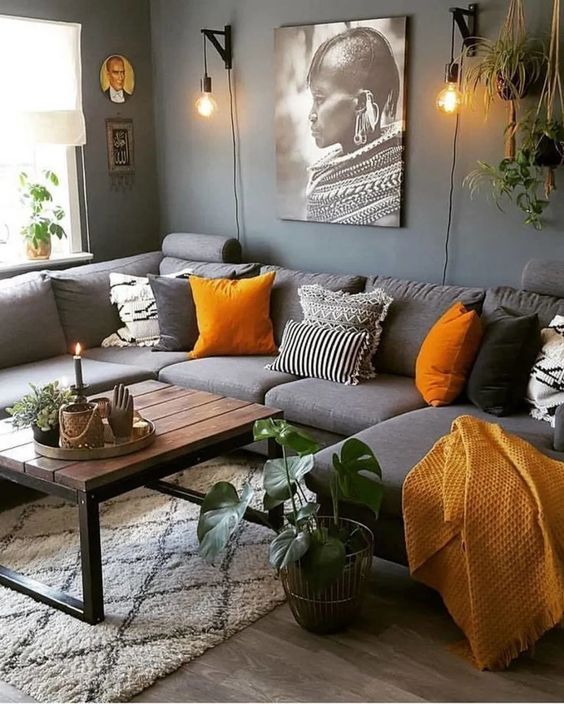
Grey Couch Living Room Ideas Decoholic

Living Room Grey Couch Dark Sofa

Grey Couch Living Room Ideas For Your Home Designcafe

Black And Grey Living Room Ideas For Gorgeous Decor Home Interiors Gray Design Small Inspiration

4 Ways To Decorate Around Your Charcoal Sofa Maria Killam
Grey Living Room Ideas Inspiration Dfs

10 Best Dark Gray Sofas You Can Living Room Inspiration Designs Grey

Grey Sofa For Living Room Design Ideas Designcafe

Pin On Home Remodel

What Colours Go With A Grey Sofa Inspiration Furniture And Choice



